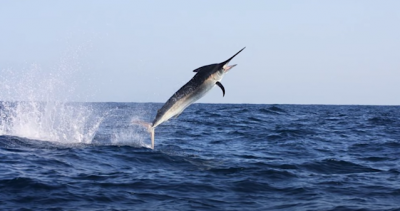
Did you know that the invention of the kerosene lamp may have prevented the extinction of the sperm whale? There was a time when these leviathans of the deep were hunted for the white, waxy substance found in their heads, called spermaceti.
People in the 18th century found that this substance could fuel lamps, power streetlights and even light up lighthouses! Consequently the sperm whale was nearly hunted off the face of the globe. It was only the invention of alternative fuel sources like the kerosene lamp that saved these creatures from total annihilation!
The sperm whale is easily recognizable for its prominent block-shaped forehead. It has the largest brain of any animal on earth. It can grow to a length of 60 feet and weigh around 40 metric tons. The female is smaller than the male but eats up to three times more!
Their favourite food is squid, the bigger the better! In fact the giant squid is their favourite snack. To find the giant squid though, the sperm whale has to dive deep into the ocean depths. It is one of the deepest divers of the whale world, capable of 2000-metre dives. This whale can also hold its breath longest of any mammal – 90 minutes! Some scientists think that the spermaceti in the sperm whale’s brain may help them to withstand high pressures on their dives. Their diet also consists of other deep-water prey like sharks, skates and fish.
They are the largest of the toothed whales, but have teeth only on the lower jaw. They have corresponding holes on their toothless upper jaw into which the lower jaw teeth fit into.
Although sperm whales are protected across the world today and spermaceti is no longer used as fuel, they are still hunted for ambergris. This is a substance which forms around squid beaks in a whale’s stomach. It is used in perfumes and is very valuable.
These iconic behemoths are listed under ‘Vulnerable’ in the IUCN Red List.
Picture Credit : Google





